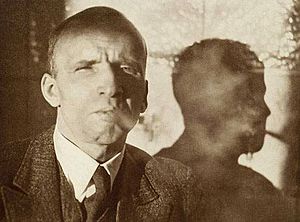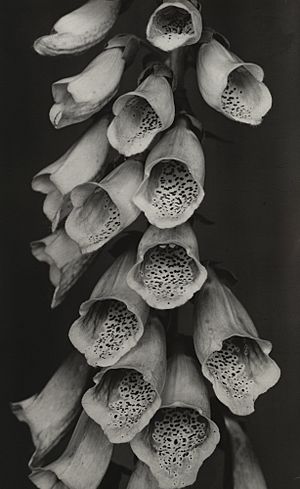Albert Renger-Patzsch facts for kids
Albert Renger-Patzsch (born June 22, 1897 – died September 27, 1966) was a German photographer. He was known for his clear and realistic style, which was part of a movement called New Objectivity.
Biography
Albert Renger-Patzsch was born in Würzburg, Germany. He started taking pictures when he was just twelve years old. After serving in the army during the First World War, he went to study chemistry at a university in Dresden.
In the early 1920s, he worked as a photographer for a newspaper, the Chicago Tribune. Later, he decided to work for himself as a freelance photographer. In 1925, he published his first book of photographs. His first art show in a museum was in Lübeck in 1927.
The World is Beautiful
In 1928, Albert Renger-Patzsch released his most famous book, called Die Welt ist schön (The World is Beautiful). This book showed one hundred of his photographs. They included pictures of plants, industrial machines, and everyday objects. He showed them all with amazing clarity, almost like scientific drawings. His publisher chose the title for the book. However, Albert himself preferred to call his collection Die Dinge (which means "The Things").
His Photography Style
Albert Renger-Patzsch's work had a very clear and straightforward style. It was a great example of the New Objectivity art movement in Germany during the Weimar Republic. This movement focused on showing things exactly as they were, without adding extra feelings or drama.
Like the American photographer Edward Weston, Renger-Patzsch believed that photography was special because it could show the true texture and essence of things. He once wrote that the secret to a good photograph is its realism. He felt that photographers should use their own unique tools to create lasting photos, without trying to copy other art forms.
Later Life and Work
Some of his well-known photos from the 1920s include Echeoeria (1922) and Viper's Head (around 1925). In the 1930s, Renger-Patzsch took pictures for factories and advertisements. Sadly, many of his old photos and records were lost during the Second World War. In 1944, he moved to Wamel, where he lived for the rest of his life. He passed away in 1966.
See also
 In Spanish: Albert Renger-Patzsch para niños
In Spanish: Albert Renger-Patzsch para niños



